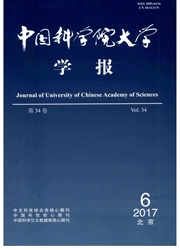

 中文摘要:
中文摘要:
利用四川盆地50年(1961—2010)来122个气象台站观测资料,分析盆地年均干能见度时空分布特征和年际变化趋势.研究结果表明,1)四川盆地干能见度多年均值为18.8km,并存在与气候、人口分布、工业和城镇发展紧密相关的4个低值中心(约1Ikm左右).2)盆地中约71%的站点(87个)的干能见度呈下降趋势,其气候倾向率在-4.5~-0.07km/lOa之间;约29%的站点(35个)的干能见度呈上升趋势,其气候倾向率约在0.08~3.3km/10a之间,干能见度增加的区域主要分布于盆地的北部边缘.3)盆地干能见度存在明显季节变化,夏季最好,冬季最差.4)干能见度下降趋势主要与风速下降、气温变暖、能源消耗和人口增加带来的人为排放的增加有密切关系.
 英文摘要:
英文摘要:
On the basis of the 50-year (1961-2010) data observed at 122 meteorological stations in Sichuan basin, we studied the monthly, seasonal, and annual distributions of visibility in the basin as well as the interannual variations. The relations of the interannual variations of visibility with the meteorological factors (wind and air temperature) , energy consumption, and increasing population were analyzed to explore the factors causing the visibility changes. The results showed that 1 )the annual average of dry visibility in Sichuan basin was 18.8 km with four centers of low visibility ( about 11 km) in association with the climate, population, industry, and urbanization ; 2) over the 50 years, 87 sites (about 71% ) in the basin were found to have negative trends in dry visibility with the change rates of - 4.5 - - 0.07 km/10a, while 35 sites (about 29% ) in the basin mostly located in the northern edge had positive trends in visibility with the change rates of 3.3 ~ 0.08 km/ 10a; 3)the visibility had significant seasonal variations with the highest in summer and the lowest in winter; and 4) the reduction of atmospheric visibility in the basin is closely related to the declining wind, warming air, increasing energy consumption, and population.
 同期刊论文项目
同期刊论文项目
 同项目期刊论文
同项目期刊论文
 期刊信息
期刊信息
